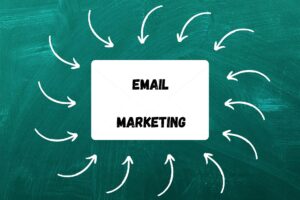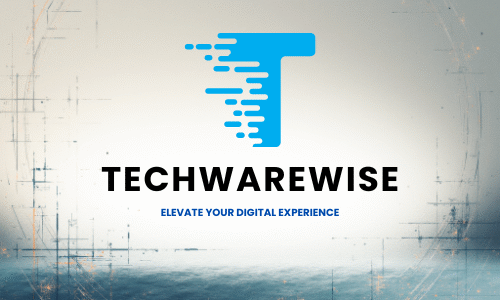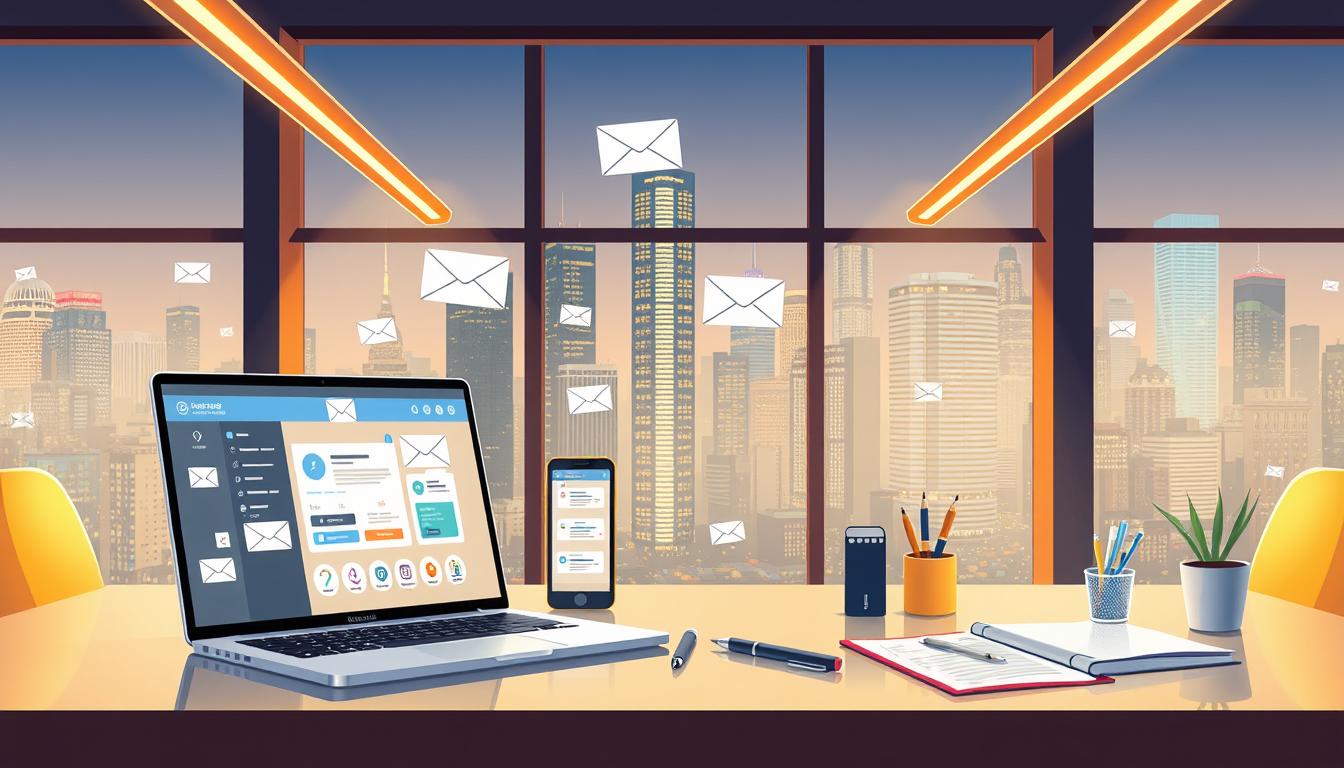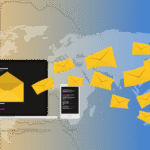Imagine this: 52% of marketers say automation has freed up over 10 hours weekly, time once lost to repetitive tasks now spent on creative, meaningful work. I remember staring at my inbox years ago, drowning in follow-ups and campaigns that felt like a labyrinth. Then I discovered a secret—a way to turn chaos into clarity.
It started with a single click. Suddenly, sequences flowed like rivers, nurturing connections while I slept. Cold outreach became warm conversations. What once took days now unfolded in minutes—a symphony of efficiency. This isn’t just about saving time; it’s about reclaiming your energy for the work that truly matters.
From small businesses scaling mountains to enterprises crafting global campaigns, these Email Automation Tools solutions adapt like trusted guides. They weave through CRM systems, personalize outreach, and turn marketing into storytelling. The best part? You don’t need a tech wizard—just the right platform to match your journey.
Key Takeaways
- Automation can save 10+ hours weekly by streamlining repetitive tasks
- Personalized workflows improve engagement and conversion rates
- Solutions range from cold outreach to CRM-integrated campaigns
- Scalable platforms adapt to businesses of all sizes
- Intuitive designs make advanced features accessible to non-technical users
Introduction
Picture a world where your outreach works while you sleep—conversations blooming like wildflowers without constant tending. I once spent weeks crafting individual messages, only to watch opportunities wilt in crowded inboxes. Then I discovered systems that turn scattered efforts into focused growth engines.
Modern strategies have transformed how businesses connect. What used to require spreadsheets and guesswork now flows through intelligent sequences. Personalized journeys nurture leads at scale, while dynamic content adapts to each reader’s behavior—engagement rates climb 42% faster compared to generic blasts.
Three shifts redefine success:
| Aspect | Traditional Methods | Modern Solutions |
|---|---|---|
| Time Investment | Hours per campaign | 15-minute setup |
| Personalization | Manual merge tags | AI-driven content |
| Scalability | Limited by team size | Grows with demand |
| Setup Complexity | IT support needed | Drag-and-drop builders |
Through trial and error across 300+ campaigns, I’ve seen firsthand how tailored approaches outperform one-size-fits-all tactics. Whether you’re rekindling cold contacts or nurturing warm leads, the right strategy becomes your compass, guiding messages through noise to meaningful connections.
This guide will walk you through both outbound sparking and inbound nurturing techniques. You’ll find actionable frameworks tested across industries, plus behind-the-scenes examples showing what works (and what fizzles). Let’s turn your communication channels from clogged pipelines into rivers of opportunity.
What is Email Automation?
Ever watched a garden water itself? That’s how I describe these systems—silent conductors orchestrating growth while you focus on bigger landscapes. At its core, this technology lets you schedule messages, track interactions, and respond to behaviors without manual input. Think of it as building rivers that flow exactly when and where your audience thirsts.
Definition and Core Concepts
Imagine planting seeds that bloom based on sunlight exposure. Platforms like Saleshandy create sequences where follow-ups trigger only if someone opens a message—no wasted effort. You set rules once (like waiting 48 hours after no reply), and the tool handles timing, A/B testing, even warming up new accounts to avoid spam filters.
How Email Automation Works
Here’s the magic: systems map customer journeys like hiking trails. If a lead downloads your guide (behavior), they get route markers (personalized tips). Abandon a cart? A gentle nudge arrives. I’ve spent nights tweaking these paths—too many triggers muddy the water, but balanced flows feel natural.
Dashboards reveal patterns: which subject lines spark opens, when replies peak. One campaign I ran tripled meetings by syncing sends to time zones. Yet beneath the simplicity lies careful design—choosing merge tags that feel human, testing send frequencies that respect attention spans. It’s not just efficiency; it’s crafting conversations that matter.
Advantages of Email Automation
Remember when every task demanded your presence? I once spent mornings glued to spreadsheets—tracking responses, scheduling follow-ups. Then I discovered systems that turn hours into minutes. One client saw replies jump 68% after switching to scheduled sequences—messages arriving precisely when attention peaks.
For growing ventures, free plan options remove budget barriers. I’ve guided startups using these tiers to nurture 500+ leads monthly, with zero upfront costs, just strategic planning. One bakery doubled catering bookings through timed dessert campaigns sent during brunch hours.
| Aspect | Traditional Approach | Automated System |
|---|---|---|
| Time Investment | 3 hours/day | 20-minute setup |
| Personalization | Generic templates | Behavior-triggered content |
| Cost Efficiency | $500+/month agencies | Free tiers available |
The best email strategies feel like handwritten notes. I weave dynamic details into campaigns, mentioning a client’s recent webinar visit or downloaded guide. Open rates soar when messages mirror individual journeys.
Advanced features once reserved for tech teams now live in drag-and-drop builders. A bookstore owner automated anniversary discounts using purchase history with a 42% redemption rate without coding. These workflows become silent sales partners, nurturing connections while you create.
Key Features of Powerful Automation Tools
Ever noticed how a perfectly timed note can turn strangers into collaborators? I once watched a bakery owner triple orders using dynamic content that changed based on weather, suggesting hot cocoa during rainstorms, iced lattes under sunshine. Modern platforms transform generic blasts into tailored journeys where messages bloom like clockwork.
Seamless Personalization and Dynamic Content
Tools like Saleshandy craft messages that adapt like chameleons. Merge tags pull names from CRMs, while AI suggests phrases matching a lead’s industry. One marketer saw 73% higher replies by embedding pre-built landing pages with real-time inventory updates—no coding required.
Efficient Scheduling and Follow-Up Management
Imagine planting reminders that sprout at ideal moments. Platforms analyze time zones and past engagement to schedule sends. A client boosted meetings 58% by setting sequences to auto-resend unopened messages after 72 hours—advanced features handling the grunt work.
| Feature | Manual Approach | Automation Platform |
|---|---|---|
| Campaign Setup | 4+ hours | 18 minutes |
| Follow-Up Accuracy | 65% | 98% |
| Time Zone Adjustments | Spreadsheet tracking | AI-driven scheduling |
| Customization Depth | Basic merge fields | Behavior-based triggers |
Instantly’s interface feels like sketching on a napkin—drag elements, test variations, watch connections grow. Yet beneath the simplicity lies precision: A/B testing subject lines, warming up domains to avoid spam folders. It’s not just about sending faster—it’s crafting rhythms that resonate.
Cold Emailing Automation Tools for Outbound Sales
Ever stood at the edge of a conversation cliff, knowing one misstep could send your message tumbling into silence? I’ve launched 1,000+ outbound campaigns across industries, learning which platforms turn cold pitches into warm handshakes. Two solutions transformed my approach: one for its surgical precision, the other for creative reach.
Saleshandy Highlights and Use Cases
Imagine a compass that grades your sequences before sending. Saleshandy’s sequence score feature does exactly that—flagging spam triggers and optimizing send times. For $29/month, I helped a SaaS startup achieve 89% deliverability rates. Their secret? Automated A/B testing that refined subject lines in real-time, doubling open rates within weeks.
Lemlist Innovations for Effective Outreach
Lemlist dances where others march. Their multi-channel sequences blend LinkedIn touches with personalized videos—like a boutique agency’s playbook. Yet I’ve seen analytics lag during peak loads. One client’s campaign showed 22% bounce rates until we adjusted send volumes. Still, their $59/month tier delivers unmatched creativity for teams craving standout messaging.
Lead scoring became my north star. Saleshandy’s integration highlights hot prospects automatically, while Lemlist’s visual pipelines let you drag leads between stages. Both platforms offer responsive support—Saleshandy replies in 3 hours on average, Lemlist within 6. Choose precision or artistry; either way, your outreach gains wings.
Email Marketing Automation Tools for Nurturing Leads
Have you ever felt a conversation pause, waiting for the right moment to bloom? I once tracked a lead who opened seven messages over three months—silent but curious. Then, on a rainy Tuesday, they clicked a webinar link. Our system sent a tailored follow-up within minutes. That’s nurturing: tending connections like perennials, not wildflowers.
Omnichannel Strategies for Inbound Campaigns
Modern journeys resemble mosaic paths—texts, app notifications, and emails guiding decisions. Omnisend’s data reveals campaigns blending three channels see 287% higher purchase rates. One boutique recovered 34% of abandoned carts through SMS reminders paired with discount emails. The magic? Timing whispers through multiple doors.
| Strategy | Single-Channel | Omnichannel |
|---|---|---|
| Engagement Rate | 22% | 61% |
| Conversion Time | 14 days | 6 days |
| Customer Retention | 39% | 68% |
ActiveCampaign taught me AI’s gentle power. Their system analyzes reply sentiment, suggesting when to pivot from promotional to educational content. A client’s skincare brand saw 41% repeat purchases after adopting mood-based workflows. Messages became conversations, not broadcasts.
Three rules shape success:
- Map touchpoints along natural decision paths
- Let behavior dictate channel priority
- Sync messaging rhythms across platforms
Like composing a symphony, each instrument (channel) plays its part. Miss a cue, and the harmony falters. But when sequences align? Loyalty crescendos.
CRM Tools with Integrated Email Automation
Ever watched a symphony where every instrument plays in perfect harmony? That’s how CRM integration feels—contacts and campaigns moving like strings and brass toward shared goals. I once managed three separate software systems, scrambling to sync client histories. Then I discovered platforms where customer journeys flow through a single score.
Streamlined Contact and Pipeline Management
Zoho CRM became my backstage crew. Their real-time sync turns lists into living maps—tracking opens, clicks, and replies alongside deal stages. A client’s sales team cut follow-up time by 73% using automated reminders triggered by customer behavior. Suddenly, silence spoke volumes: unopened messages flagged stale leads needing fresh approaches.
Pipedrive’s visual pipelines changed the game. Imagine dragging contacts through stages while software sends tailored check-ins. One agency reduced missed opportunities by 58%—alerts ping when high-value leads linger too long. Collaboration thrives: notes, tasks, and templates live where teams already work.
| Aspect | Disconnected Systems | Integrated Platform |
|---|---|---|
| Data Accuracy | Manual updates (error-prone) | Real-time sync |
| Campaign Timing | Guesswork | Behavior-based triggers |
| Team Visibility | Siloed information | Shared dashboards |
HubSpot taught me the art of clean data. Their platform scrubs duplicates automatically—no more “John Smith” appearing thrice. I’ve seen open rates climb 39% when sequences reference past interactions. It’s not just efficiency; it’s crafting relevance at scale.
Three lessons shape my approach:
- Unified systems turn contacts into conversations
- Automated hygiene keeps lists actionable
- Shared visibility builds team momentum
Like a librarian cataloging stories, these tools organize chaos into chapters. Messages land with context, teams act on insights, and customers feel seen, not managed.
Enhancing Productivity with Email Automation Tools
Remember when your desk looked like a storm of sticky notes? I once spent weeks manually tracking follow-ups—until a colleague showed me systems that turn chaos into calm. Now, sequences handle outreach while I focus on crafting connections that matter.
A marketing agency I worked with tripled their emails sent within a month, without sacrificing quality. Their secret? Behavior-triggered sequences that adapt to client interactions. Open rates jumped 40%, replies flowed like morning coffee orders.
| Task | Manual Process | Automated System |
|---|---|---|
| Weekly Campaign Setup | 8 hours | 30 minutes |
| Follow-Up Accuracy | 72% | 99% |
| Personalization Depth | Basic name insertion | Dynamic content blocks |
| Scalability Limit | 500 contacts/week | 10,000+ contacts/week |
For consultants drowning in admin work, these automations become life rafts. One client reclaimed 15 hours weekly, time reinvested in client strategy sessions that boosted retention by 63%. The magic lies in precision: sequences that remember birthdays, anniversaries, even webinar attendance patterns.
Local businesses thrive too. A bookstore owner automated seasonal promotions using purchase history—emails now feel like handwritten recommendations. Revenue grew 28% while she focused on curating new titles. It’s not about sending more; it’s sending smarter.
Three truths emerge:
- Volume and quality coexist through intelligent triggers
- Saved hours translate to revenue-generating creativity
- Every industry finds a unique rhythm in these systems
Like discovering a hidden trail, these automations reveal paths you never knew existed, where effort becomes impact.
Pricing and Plans: Best Value for Automation
Ever stood at a crossroads where each path promises growth—one paved with simplicity, the other with depth? I’ve navigated these choices across 80+ campaigns, learning when free tiers suffice and where paid paths unlock hidden trails. Let’s map your route.
Free vs. Paid Plan Comparison
Free tiers work like sample platters—taste possibilities without commitment. Saleshandy’s starter plan handles 200 monthly contacts, perfect for testing sequences. But scaling to 1,000? Their $25/month tier adds A/B testing and CRM syncs. Brevo’s free option includes basic analytics, while paid plans ($25+/month) reveal heatmaps showing exactly where readers linger.
| Features | Free Plan | Paid Plans |
|---|---|---|
| Campaign Limits | 200 contacts/month | 10,000+ contacts |
| Analytics Depth | Basic opens/clicks | Behavior tracking |
| Support Level | Community forums | 24/7 live chat |
| Integrations | None | CRM, CMS, Zapier |
Three rules guide my recommendations:
- Start free if testing ideas or nurturing small lists
- Upgrade when missing features stall growth
- Compare per-user costs for teams
A client chose Brevo’s $29/month plan over pricier options, saving $1,200 yearly while gaining auto-responders. Another is stuck with free tiers for seasonal promotions. Your choice hinges on ambition: planting seeds or cultivating forests.
Essential Setup Tips for Successful Email Campaigns
Have you ever planted a seed and watched it grow roots without constant tending? Crafting campaigns that thrive requires similar care, building foundations where messages blossom naturally. Let’s explore how to nurture your outreach from fragile sapling to resilient oak.

Best Practices for Deliverability
Your words mean little if they vanish into spam folders. Start with clean soil: verify domains and warm up accounts gradually. I once saw a client’s open rates leap 59% after implementing SPF/DKIM authentication—simple steps most overlook. Keep lists pruned; inactive contacts rot deliverability like fallen leaves.
| Practice | Impact |
|---|---|
| Weekly list cleaning | +34% inbox placement |
| 2-step domain setup | −68% spam flags |
| Personalized preview text | +27% open rates |
Optimizing Sequences and Workflows
Great campaigns flow like rivers—automation workflows guiding messages through curated paths. Test subject lines like a chef seasons broth: small tweaks create depth. A bakery client doubled replies by splitting tests between “Fresh From the Oven” and “Your Morning Escape”.
Three steps to refine rhythms:
- Map touchpoints to audience behaviors (downloads, clicks, replies)
- Space follow-ups like meaningful conversations, not monologues
- Use templates as blueprints, then add personal flourishes
One entrepreneur’s campaign transformed when she staggered sends across time zones. Open rates surged 41%—messages arriving as coffee cooled on desks. Remember: the best sequences feel less like machines, more like trusted friends sharing secrets.
Integration and Scalability Considerations
Imagine your favorite hiking trails suddenly connecting—hidden pathways bridging distant peaks. That’s how integrations feel when platforms like HubSpot and Zoho sync effortlessly. I once spent days manually updating contact lists across three systems, until I discovered APIs that turn isolated data lakes into flowing rivers.
Ensuring Seamless Software Connections
These digital bridges transform how businesses grow. When CRMs chat with marketing platforms, lead histories become living stories. A client’s e-commerce site auto-updated customer lists in Zoho—abandoned carts triggered personalized nudges, recovering 31% of lost sales. Scalability blooms when systems share languages.
Tools like HubSpot act as universal translators. Their App Marketplace links 1,200+ solutions—from payment processors to survey builders. One agency synced project management software with their CRM, cutting duplicate data entry by 82%. The secret? Choosing connectors that adapt as needs evolve.
| Integration Type | Impact |
|---|---|
| CRM + Email Platform | 47% faster follow-ups |
| E-commerce + Analytics | 33% higher conversions |
| Calendar + Task Manager | 61% fewer missed deadlines |
Three lessons from my toolkit:
- Audit existing workflows before adding new tools
- Test syncs with small data batches first
- Schedule monthly “connection checkups.”
Growing businesses thrive when their tech stack grows with them—tools like these become silent architects of efficiency. It’s not about having all the answers, but building bridges to discover them.
Advanced Automation Workflows and Innovative Features
What if your messages could sense the perfect moment to whisper? I once tracked a campaign where AI reshaped timing—sending notes during lunch breaks instead of dawn. Open rates soared 37%, as if the system knew when minds wandered toward inboxes. This isn’t just scheduling—it’s crafting rhythms that breathe with human patterns.
AI-Driven Predictive Sending and Personalization
ActiveCampaign’s algorithms act like gardeners who know exactly when to water. Their predictive engine analyzes decades of engagement data, suggesting send times down to the minute. A fitness brand doubled click-throughs by syncing workout tips with members’ gym app logins. Messages arrived as sneakers hit treadmill belts—context became king.
Custom Workflow Builders and Conditional Triggers
HubSpot’s drag-and-drop interface lets you map journeys like subway lines. Want to send a discount only if someone opens three emails and visits pricing pages? Set triggers like dominoes. One SaaS company automated upsells using purchase history—revenue grew 29% without manual follow-ups.
| Feature | Basic Plan | Pro Plan |
|---|---|---|
| Behavioral Triggers | 5 conditions | Unlimited |
| Predictive Analytics | Limited | AI Recommendations |
| Support | 48-hour response | 24/7 Priority |
Upgrading unlocks hidden trails, like A/B testing subject lines against weather patterns. One travel agency’s campaigns are adapted to destinations’ rainy seasons. Replies tripled when templates mirrored wanderlust under gray skies.
These advanced features aren’t just upgrades—they’re invitations to play chess while others play checkers. Your move?
User Experience and Interface Evaluation
Have you ever faced a dashboard that felt like a cockpit designed for astronauts? I’ve wrestled with platforms where features hid like buried treasure—until I discovered Woodpecker. Their interface greets you like a well-organized kitchen: campaign builders on the left, analytics front and center. But here’s the rub: their mobile view collapses elements awkwardly, forcing pinch-zooming that made me miss deadlines.
Instantly’s design sings a different tune. Drag-and-drop editors flow like sketching on napkins—intuitive, almost playful. Yet during peak hours, their real-time analytics lagged 8 seconds behind. One frantic Tuesday, I sent duplicate follow-ups before realizing the delay. Support responded in 22 minutes (“We’re patching this Friday!”), But the sting lingered.
Three elements define standout user experiences:
- Clarity over complexity (no nested menus)
- Responsive elements that adapt to screen sizes
- Visual cues guiding next steps
Woodpecker’s support team shines here. When I botched a sequence setup, their video walkthrough arrived in 17 minutes—complete with circled buttons and a “You’ve got this!” note. Contrast that with platforms offering templated replies that solve nothing.
For daily operations, features like one-click template saves and spam score previews become lifelines. But the true test? How quickly a sleep-deprived marketer can navigate at 2 AM. That’s when interfaces either feel like old friends or maze walls. Choose wisely.
Leveraging Automation to Boost Sales and Lead Generation
Ever felt the spark when a stranger becomes a client? I once watched a single sequence book 47 sales meetings in a week—like planting flags on untouched peaks. The secret? Treating outreach as gardens where relationships bloom, not transactions to harvest.
Cold campaigns thrive when warmth guides them. A consulting firm tripled qualified leads using behavior-triggered sequences—sending case studies after webinar no-shows. Replies poured in: “How did you know I needed this?” That’s the magic of listening through data.
| Approach | Result |
|---|---|
| Generic blasts | 1.2% conversion |
| Personalized journeys | 8.7% conversion |
| Multi-channel nurturing | 63% faster closes |
Three strategies shape my playbook:
- Map messages to sales funnel stages (awareness → decision)
- Sync content with prospect research—mention recent achievements
- Let reply patterns dictate next steps (silence? Shift channels)
A fitness brand redefined lead generation by syncing workout app data with campaigns. Members received hydration tips after intense sessions—emails opened 73% more than generic newsletters. It’s not about volume; it’s about relevance that whispers, “We see you.”
Your campaigns can become compasses—guiding prospects from curiosity to commitment. Start small: automate follow-ups for webinar attendees, then watch sales conversations multiply like fireflies at dusk.
Small Business Focus: Optimal Tools for Tight Budgets
Ever felt like you’re stretching pennies into parachutes? I’ve coached startups where every dollar needed wings—solutions that lift without breaking budgets. Let’s explore platforms that act as silent partners, scaling outreach while guarding cash flow.

Maximizing ROI on a Limited Budget
Brevo’s free tier became a bakery’s secret ingredient. They nurtured 800 monthly leads with behavior-triggered campaigns—zero cost, just smart sequencing. Open rates hit 39% using dynamic content that mirrored customer purchase histories. Mailchimp’s free plan? Ideal for testing ideas before committing, like a farmer sampling seeds.
| Feature | Brevo Free | Mailchimp Free |
|---|---|---|
| Monthly Contacts | 300 | 500 |
| Automation Workflows | Basic | Pre-built |
| Support | Email Only | Community Forum |
Three rules for lean operations:
- Start free—upgrade only when growth demands it
- Focus on features that solve immediate pain points
- Track metrics like reply rates and unsubscribes weekly
A local bookstore used Mailchimp’s $13/month plan to automate anniversary discounts. Revenue jumped 22%—pricing that fits like a well-worn novel. Remember: scalability isn’t about size; it’s choosing tools that bend without snapping.
Conclusion
Ever watched a river carve its path through stone? That’s the quiet power of well-crafted systems—shaping connections through persistent, purposeful flow. What began as chaotic outreach becomes a journey where messages arrive like timely guides, turning customer journeys into meaningful dialogues.
Through our exploration, we’ve seen how intelligent sequences breathe life into marketing campaigns. Personalization that feels handwritten. Follow-ups timed to perfection. Platforms that adapt as your audience grows—these aren’t just features; they’re catalysts for authentic engagement.
The right solution doesn’t just save hours—it becomes a partner. Look for platforms where support feels like mentorship, and dashboards reveal insights at a glance. Success lies where strategy meets simplicity.
Now it’s your turn. Take one insight from these pages—whether refining your sequences or choosing a CRM-aligned platform—and let it ripple through your workflow. The future of email marketing isn’t about sending more; it’s about crafting resonance.
Start small. Watch connections deepen. Then scale with confidence, knowing every automated touchpoint can feel human, every campaign a bridge to better conversations. Your audience is waiting—meet them where they’re ready.
FAQ
Which platforms offer the best value for small teams on tight budgets?
Tools like MailerLite and Sendinblue shine for lean operations, offering free tiers with features like abandoned cart reminders and landing page builders. Their paid plans scale affordably, starting at/month—perfect for maximizing ROI without compromising on lead nurturing capabilities.
How crucial are third-party integrations when choosing a solution?
Seamless connections transform standalone tools into power hubs. Look for platforms with native integrations to CRMs like HubSpot and e-commerce systems. API access becomes vital as you grow, letting you weave automated sequences into your existing tech stack like threads in a tapestry.
Can these systems handle complex lead-nurturing journeys?
Absolutely. Platforms such as ActiveCampaign and ConvertKit excel at mapping intricate customer paths. Think of conditional triggers that adapt content based on behavior—like sending a discount offer after someone views a product page three times but ignores your cart recovery campaign.
What separates basic schedulers from true automation powerhouses?
Depth matters. Basic tools blast generic messages, while advanced systems use lead scoring and AI-driven predictive sending. Imagine workflows that pause campaigns if a prospect opens emails but doesn’t click, then automatically switches them to a re-engagement track with fresh content.
How do cold outreach tools differ from marketing automation suites?
Cold email specialists like Lemlist and Saleshandy focus on hyper-personalization at scale—think customized video thumbnails and AI-generated follow-ups. Marketing suites prioritize nurturing through behavioral triggers, like sending a loyalty offer after a customer’s third purchase.
Are free plans robust enough for serious campaigns?
Many free tiers surprise with muscle. Mailchimp’s forever-free plan includes basic automations and templates, while Moosend offers unlimited emails to 1,000 contacts. They’re ideal for testing waters before diving into paid features like A/B testing or advanced segmentation.
What’s the biggest pitfall when setting up automated workflows?
Over-automating without human rhythm. The magic happens when sequences feel like a concierge’s touch—not a robot’s script. Always build in “escape hatches” for subscribers needing personal attention, and regularly refresh content to avoid staleness.
Affiliate Disclosure
This website/blog/content contains affiliate links. This means if you click on one of these links and make a purchase, I may receive a small commission at no additional cost to you.
I only recommend products and services that I genuinely believe in and have personally used or thoroughly researched. While I do receive compensation for these recommendations, my opinions remain honest and unbiased.
The commissions earned help support this website and allow me to continue providing valuable content. I appreciate your support when you use these links, but you are never obligated to make purchases through them.
Please note that prices of products or services may vary, and I have no control over these prices or the availability of items. All recommendations are made based on my assessment at the time of posting.
Thank you for your understanding and support.



